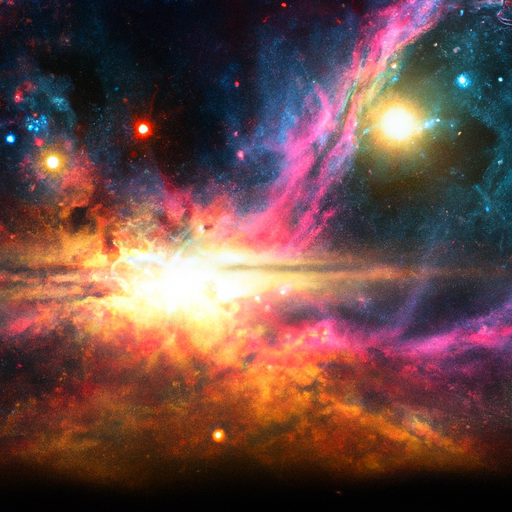Let’s take a journey through the fascinating world of cosmological theories and explore how our understanding of the universe has evolved over time. From the ancient wisdom of Aristotle to the groundbreaking discoveries of modern science, the concept of the cosmos has continually evolved, shaping our perception of the vastness and complexity of the universe. Join us as we delve into the rich history of cosmological theories, uncovering the remarkable ideas that have shaped our understanding of the cosmos. Get ready to embark on an intellectual adventure that will leave you in awe of the grandeur of the universe.

Ancient Greek Cosmology
In ancient Greek cosmology, the prevailing model was the geocentric model, which placed the Earth at the center of the universe. This model was developed by philosophers such as Aristotle. According to Aristotle’s cosmology, the Earth was stationary and all celestial bodies, including the Sun, Moon, planets, and stars, orbited around it in perfectly circular paths.
The Copernican Revolution
The Copernican Revolution marked a significant turning point in our understanding of the universe. It introduced the heliocentric model, which placed the Sun at the center of the solar system. Nicolaus Copernicus, a Polish astronomer, was the key figure in this revolution. Copernicus challenged the geocentric model and proposed that the Earth and other planets revolved around the Sun.
The Laws of Planetary Motion
Tycho Brahe, a Danish astronomer, made detailed observations of the planets’ positions and movements. His observations provided crucial data for future astronomers, including Johannes Kepler. Kepler, a German astronomer and mathematician, formulated three laws of planetary motion. The first law stated that planets move in elliptical orbits with the Sun at one of the focal points. The second law described the equal area law, where a line connecting a planet to the Sun sweeps out equal areas in equal time intervals. The third law established a mathematical relationship between a planet’s orbital period and its distance from the Sun.
Galileo and the Telescope
Galileo Galilei, an Italian astronomer, made groundbreaking contributions to the field of cosmology. He built his own telescope and made detailed observations of celestial bodies. Galileo’s observations of the Moon’s craters, Jupiter’s moons, and the phases of Venus provided evidence against the geocentric model. His discoveries supported the heliocentric model and further challenged the prevailing cosmological beliefs of the time.
Newton and Universal Gravitation
Isaac Newton, a British scientist, formulated the laws of motion and the theory of universal gravitation. In his famous work, “Principia Mathematica,” Newton proposed that the force of gravity acts between all objects in the universe. He established that this force is directly proportional to the product of their masses and inversely proportional to the square of the distance between them. Newton’s gravitational theory provided a unified explanation for both celestial and terrestrial motion.
The Expanding Universe
Edwin Hubble, an American astronomer, made groundbreaking observations in the 1920s that led to the discovery of the expanding universe. Hubble observed that the light from distant galaxies was shifted towards longer wavelengths, known as redshift. This phenomenon indicated that galaxies were moving away from each other, implying an expanding universe. Hubble’s observations provided strong evidence to support the Big Bang Theory, which posits that the universe originated from a singularity, a point of infinite density and temperature.
Relativity and the Cosmos
Albert Einstein’s theory of general relativity revolutionized our understanding of gravity and the cosmos. Einstein proposed that gravity is not just a force but a curvature of spacetime caused by the presence of mass and energy. His theory provided a new perspective on how celestial bodies interact with each other and how the fabric of spacetime itself can be affected by massive objects.
Quantum Mechanics and Cosmology
Quantum mechanics, a branch of physics that deals with the behavior of particles at the atomic and subatomic level, also has implications for cosmology. The wave-particle duality, a fundamental concept in quantum mechanics, suggests that particles can exhibit both wave-like and particle-like properties. Quantum field theory, a framework combining quantum mechanics and field theory, plays a significant role in understanding the behavior of particles and fields in the expanding universe. Inflationary cosmology, a theory rooted in quantum field theory, proposes that the early universe underwent a period of rapid expansion, solving problems such as the homogeneity and flatness of the universe.
Cosmic Microwave Background
The discovery of the cosmic microwave background (CMB) provided strong evidence in support of the Big Bang Theory. Arno Penzias and Robert Wilson accidentally detected a faint background radiation throughout the universe. This radiation, known as the CMB, is the remnants of the early universe when it transitioned from a hot, dense state to a cooler state. The CMB has been studied extensively and has provided valuable insights into the early structure of the universe and the distribution of matter.
Modern Cosmological Theories
Modern cosmological theories continue to evolve, pushing the boundaries of our understanding of the cosmos. The multiverse theory suggests the existence of multiple universes, each with its own physical laws and properties. String theory, a branch of theoretical physics, proposes that fundamental particles are not point-like but rather tiny strings vibrating in higher-dimensional space. M-theory, an extension of string theory, aims to unify various versions of string theory.
In conclusion, the evolution of cosmological theories from ancient times to modern science is a testament to humanity’s curiosity and quest for knowledge. From the geocentric model to the heliocentric model, from Aristotle to Einstein and beyond, each advancement in cosmology has deepened our understanding of the vast universe we inhabit. The journey continues as scientists explore new frontiers and strive to unravel the mysteries of our cosmic existence.